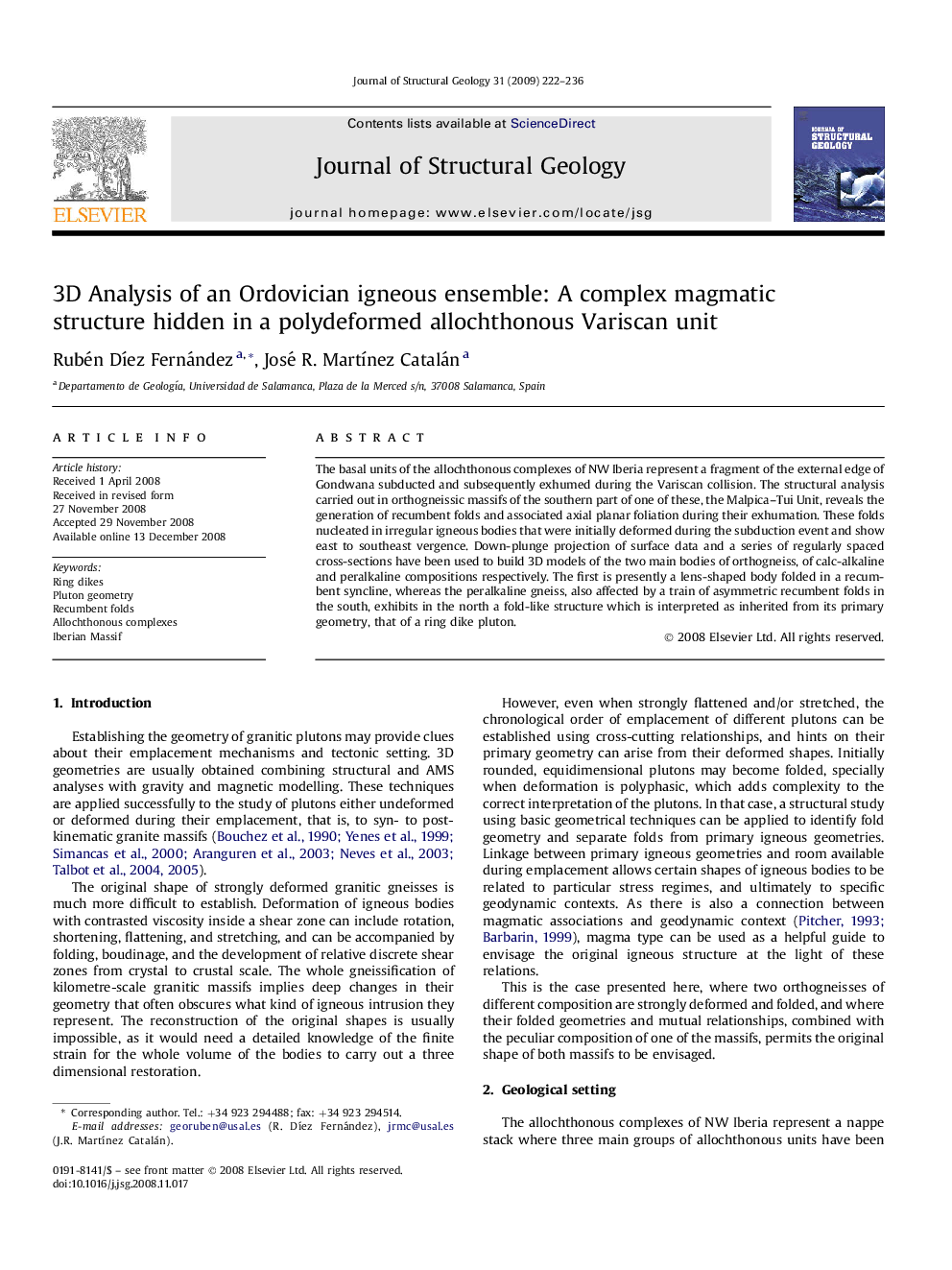| Article ID | Journal | Published Year | Pages | File Type |
|---|---|---|---|---|
| 4733938 | Journal of Structural Geology | 2009 | 15 Pages |
The basal units of the allochthonous complexes of NW Iberia represent a fragment of the external edge of Gondwana subducted and subsequently exhumed during the Variscan collision. The structural analysis carried out in orthogneissic massifs of the southern part of one of these, the Malpica–Tui Unit, reveals the generation of recumbent folds and associated axial planar foliation during their exhumation. These folds nucleated in irregular igneous bodies that were initially deformed during the subduction event and show east to southeast vergence. Down-plunge projection of surface data and a series of regularly spaced cross-sections have been used to build 3D models of the two main bodies of orthogneiss, of calc-alkaline and peralkaline compositions respectively. The first is presently a lens-shaped body folded in a recumbent syncline, whereas the peralkaline gneiss, also affected by a train of asymmetric recumbent folds in the south, exhibits in the north a fold-like structure which is interpreted as inherited from its primary geometry, that of a ring dike pluton.
